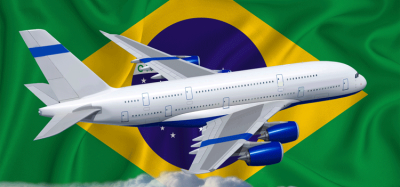IATA One ID: A deep dive into the interoperability challenge
- Like
- Digg
- Del
- Tumblr
- VKontakte
- Buffer
- Love This
- Odnoklassniki
- Meneame
- Blogger
- Amazon
- Yahoo Mail
- Gmail
- AOL
- Newsvine
- HackerNews
- Evernote
- MySpace
- Mail.ru
- Viadeo
- Line
- Comments
- Yummly
- SMS
- Viber
- Telegram
- Subscribe
- Skype
- Facebook Messenger
- Kakao
- LiveJournal
- Yammer
- Edgar
- Fintel
- Mix
- Instapaper
- Copy Link
Posted: 16 December 2020 | Kelly-Anne Frenette | No comments yet
On 25 November 2020, the International Air Transport Association’s (IATA) webinar was hosted by International Airport Review. It went through the main data privacy challenges and how they could be addressed within the One ID Ecosystem and supporting standards.


The recent webinar on the International Air Transport Association (IATA) One ID initiative hosted by International Airport Review raised interesting questions on the challenges posed by the modernisation of passenger processes and the introduction of biometric recognition. Four renowned experts were invited to expose the necessary component of a globally interoperable system.
Agathe Lara, IATA Senior Legal Counsel Specialist Data Privacy Corporate Compliance set the scene and explained the importance of the principles of privacy by design and by default, upon which modern identity management tools should be based. As the Digital Identity Principal Director at Accenture, Daniel Bachenheimer further provided his view on the value of decentralised information and technology to support these data privacy principles.
“Travelers are in possession and control of their identity attributes and can consent to share selected information required for each specific service provider pre-travel. The authenticity, integrity, and revocation status of the identity shared can be validated by the verifier without a central authority,” said Bachenheimer.
One ID aims to enable recognition and interoperability between different systems through global cooperation between governments and international bodies by recognising the importance of facilitating and promoting the use of digital travel credentials and biometrics while respecting data privacy based on agreed international standards and principles. Justin Ikura, Deputy Director at Government of Canada, Department of Immigration, Refugees and Citizenship Canada and one of the leading experts in digital identity and modernisation of passport for travellers further described how this digital travel credential (DTC) would look like and what would constitute its interoperability. Ikura pointed out that the DTC could be derived from an existing e-Passport or issued in parallel or in replacement of a physical passport. The DTC specifications being based on the same principles than the e-Passport this should simplify its adoption in the travel continuum.
This was further confirmed by Dale Brown, Acting Director at Government of Canada, Department of Canada Border Services Agency who illustrated the implementation of modern identity management tools by border control authorities and the multi-benefits especially in terms of information security and efficiency.
The webinar explored the current developments of One ID travel through lessons learned as a result of real-life trials and implementation and subsequent best practices implemented around the world. It also provided an insight into the increasingly important role of digital identity and the pivotal role of biometrics and data-protection schemes in a multi-stakeholder ecosystem. There was a strong call for an integrated framework of interoperable systems requiring government engagement, co-ordination and backing.
It was agreed that the industry, more than ever, needs to accelerate its adoption of identity management solutions that will enable the use of a passenger-trusted digital identity through a passenger-centric identity management solution and allow for biometric recognition and contactless journey to contribute to a safer industry restart.
Together with our wide range of stakeholders (airlines, airports, governments, international organisations and service providers), IATA is planning to support this goal and increase its efforts by developing further guidance, and continuing to support and ensure harmonisation of a seamless One ID travel experience. IATA’s objective is to bring industry and government stakeholders together to establish a common vision and pursue the development and adoption of standards and recommended practice.
The digital identity creation, authentication, biometric enrolment and the use of biometrics is a key trend in passenger processing, and many individual projects and initiatives have already started around the globe. If done properly, robust identity management based on biometric recognition will bring significant benefits in terms of passenger experience (enhanced speed and simplicity, reduction in queues, facilitation of border and security processes), operational efficiency (increased opportunity for self-service options and automation) and security (border security as well as aviation security). IATA’s role is key to developing recommended practices and to drive towards harmonisation on behalf of its airline members.
You can view the full webinar on demand via this link.

















